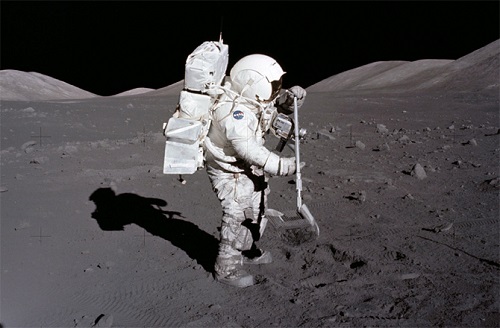To improve long term mission sustainability, NASA is planning two missions in the near future to demonstrate how to produce water on the moon and oxygen on Mars. The initiative known as IRSU, or “in-situ-resource-utilization,” is the only viable method for supporting long distance space exploration missions such as the first human expedition to Mars.
When resupplying astronaut with life-dependent resources can take anywhere from a few weeks to a few months, relying on such methods puts the crew at risk. Not to mention that producing these resources on-site also clears plenty of valuable cargo space.

According to the lunar geologist Paul Spudis from the Lunar and Planetary Institute in Houston, for every pound of weight NASA saves on water, air and propellant, the expedition can be outfitted with additional gear capable of accomplishing some task or experiment. “Doing ISRU gives you incredible leverage because you’re changing the fraction of intelligent-to-dumb mass on your spacecraft in favor of the intelligent part.”
The first of the two missions is slated for 2018. Named Resource Prospector, NASA will transport a rover to moon with instruments specifically designed to scout for hydrogen, drill out samples, and heat them to extract water vapor. Once the vapor is collected it can be re-condensed to form linkable water drop-lets. “A lot of the technologies have broader use than just lunar … it’s just a convenient location to be testing the ISRU technology,” declares Jason Crusan, director of Advanced Exploration Systems at NASA headquarters in Washington DC.

The Canadian Space Agency's Artemis Jr., shown above, will drill for water and ice during NASA's Resource Prospector mission to the moon.
Mission two will be carried out by a brand new rover launch toward Mars in 2020. This second experiment will extract carbon dioxide from the Martian atmosphere, filter out dust and debris, then prepare the gas for the chemical processing needed to convert to oxygen. The actual device used in the experiment has not be selected, but NASA hopes to include an oxygen production system with the mix.
As of yet, both experiments have been successfully carried out on Earth, but what remains unknown are the effects of actually being on Mars or the moon; the gravity and atmosphere in these locations are significantly different than back home.
The success or failure of these missions will determine whether the technologies move from demonstration to actual mission inclusion. “There’s an inherent risk of putting ISRU in the critical path of mission success, so it’s been stated that you need to do demonstrations. That said, a lot of times funding is associated only with things that are in the critical path for human missions. So we’ve been kind of in a catch-22,” states ISRU program overseer Gerald Sanders.
Sanders further adds “the important of a mission like Resource Prospector or the Mars 2020 (ISRU demonstration) is that it kind of breaks that cycle, the paradigm. If it pans out, you can start seriously thinking about how you would change your exploration approach.”
Story via Discovery News
Advertisement
Learn more about Electronic Products Magazine





